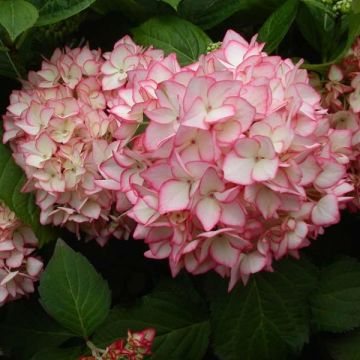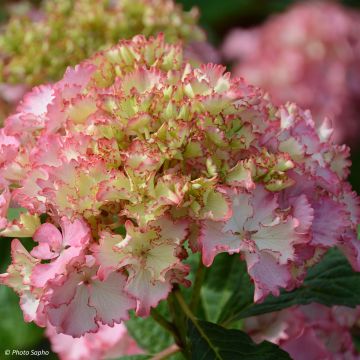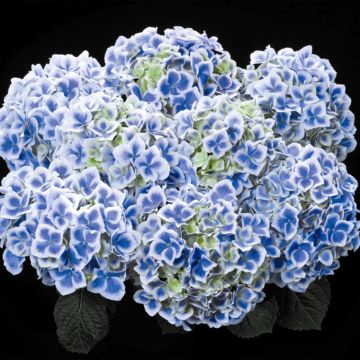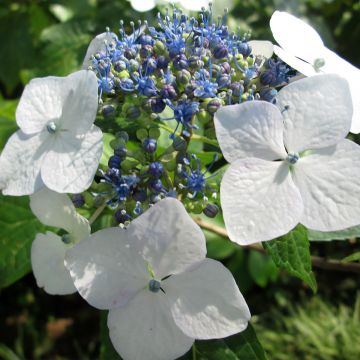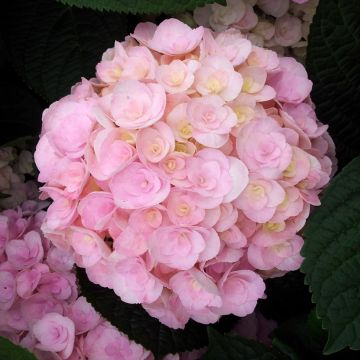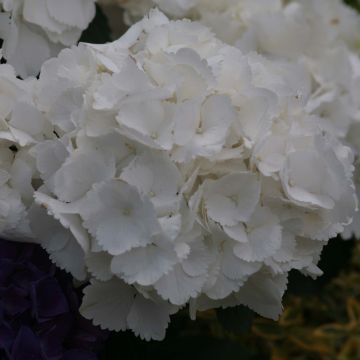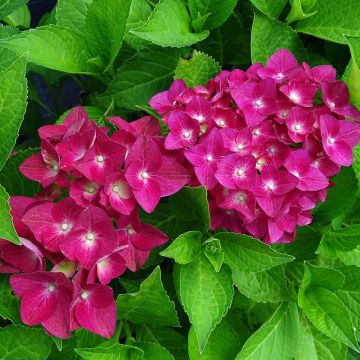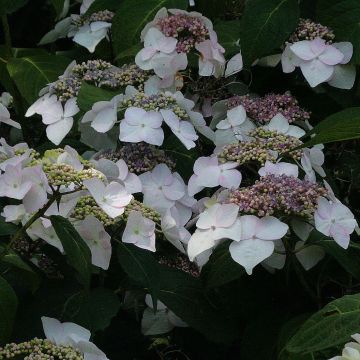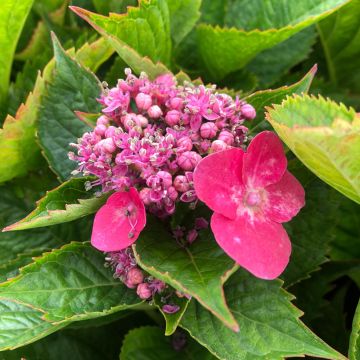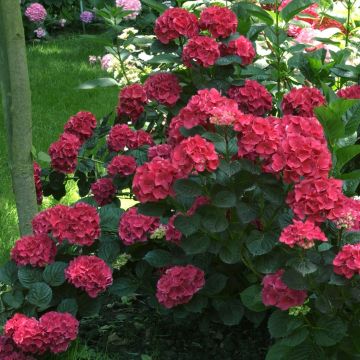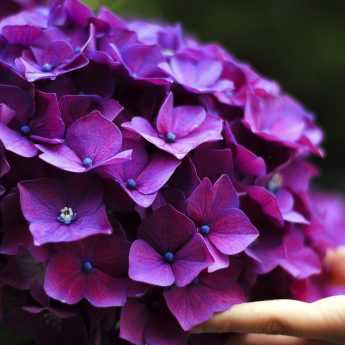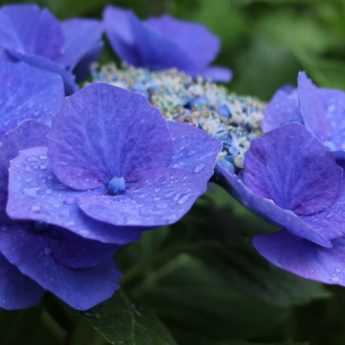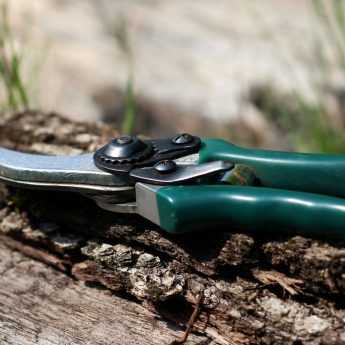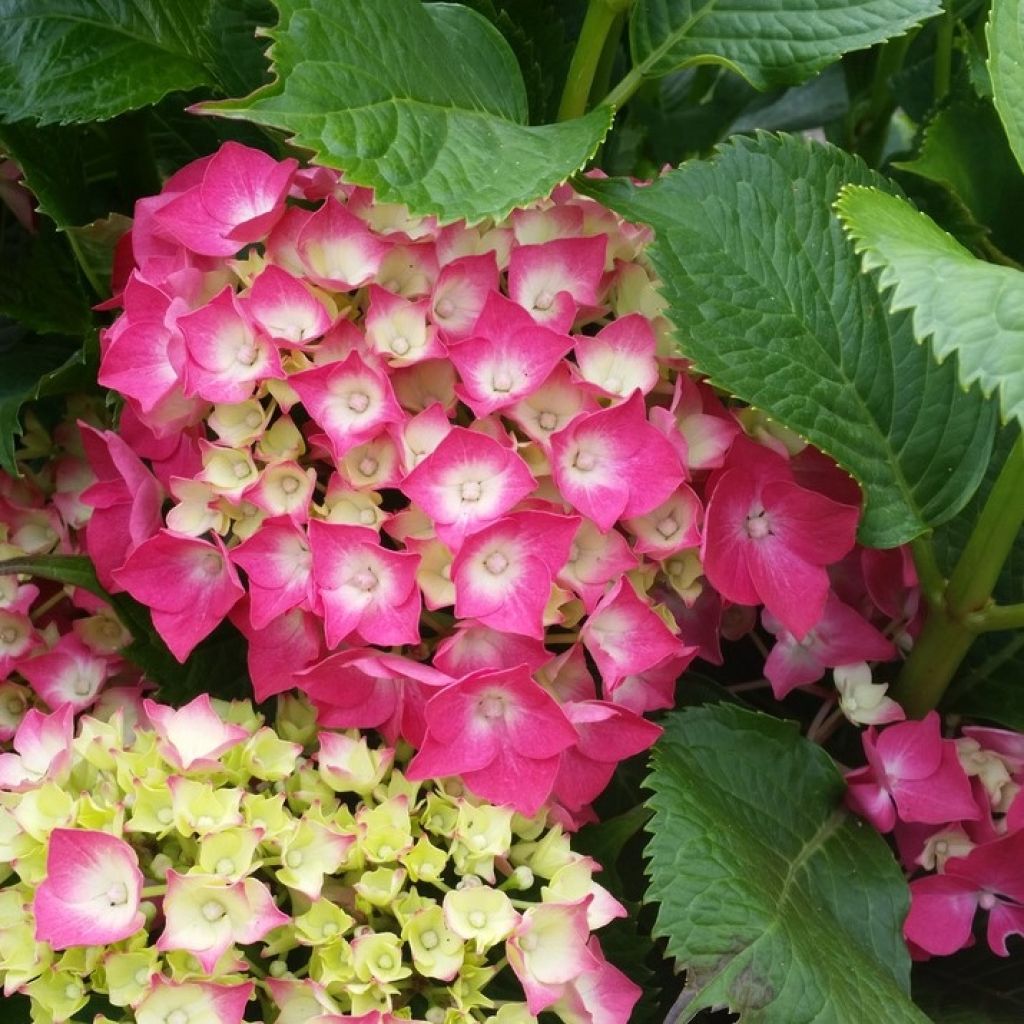

Hydrangea macrophylla Red Baron
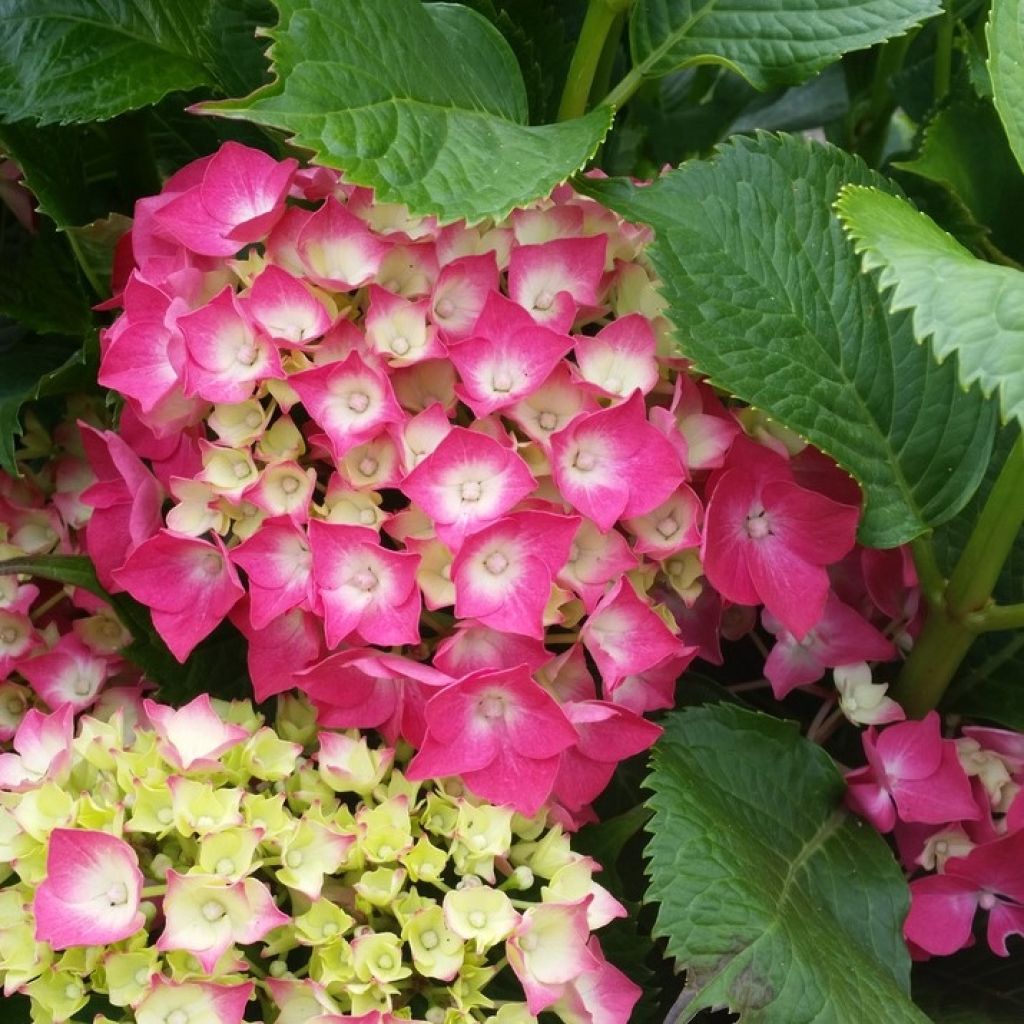

Hydrangea macrophylla Red Baron
Hydrangea macrophylla Red Baron
Hydrangea macrophylla Baron Rouge
Bigleaf Hydrangea, French Hydrangea, Mophead Hydrangea
This item cannot be shipped to the selected country
Delivery charge from €6.90
Delivery charge from €6.90
More information
Delivery charge from €6.90
Delivery charge from €6.90
More information
Schedule delivery date,
and select date in basket
This plant carries a 24 months recovery warranty
More information
We guarantee the quality of our plants for a full growing cycle, and will replace at our expense any plant that fails to recover under normal climatic and planting conditions.
From €7.90 for pickup delivery and €6.90 for home delivery
Express home delivery from €8.90.
From €7.90 for pickup delivery and €6.90 for home delivery
Express home delivery from €8.90.

Does this plant fit my garden?
Set up your Plantfit profile →
Description
The Hydrangea or Hydrangea macrophylla 'Baron Rouge', also known as the 'Red Baron', is a compact variety with a well-branched habit, suitable for planting in small gardens and growing in containers. From July to October, it produces large bright pink flowers when they first bloom, gradually turning to a deeper red as the summer progresses. This abundant flowering, enhanced by the green background of the foliage, offers a magnificent spectacle during a season when the garden is at its best. This Hydrangea is very hardy and should be planted in semi-shaded conditions, in neutral to acidic soil. It is easy to grow, requiring only annual pruning in spring and regular watering in summer to keep the soil moist.
Hydrangea macrophylla is a deciduous bush native to Japan, where its beauty has been appreciated for centuries and mentioned in poems dating back to the 8th century! In a country that places great importance on plants, festivals are even dedicated to this bush. It can be found growing naturally on the island of Honshu (home to the capital Tokyo) and was introduced to Europe around 1789.
This 'Baron Rouge' Hydrangea is a German variety, bred by VEG Zierpflanzen (Erfurt, Thuringia) in the 1970s and named 'Schöne Bautznerin' in Germany. It stands out for its unique flowering, which changes colour throughout the season. The large round flower heads, about fifteen centimetres in diameter, appear in July and start off a beautiful dark pink. Gradually, during the summer, they become darker and darker red, creating a magnificent contrast with the green foliage. Its compact habit and dense branching make it one of the most beautiful summer-flowering shrubs, with an exceptionally long bloom period. This small Hydrangea naturally forms a ball shape, measuring about 1.20 metres (3 feet 11 inches) in all directions, and can be grown in containers. This gem can therefore enhance a shaded terrace.
This Hydrangea is not strictly a plant for acidic soils, but it prefers neutral to acidic soils like all H. macrophylla. A semi-shaded position suits it well, as well as regular watering in summer because it does not like drought (both in the soil and in the air), which can cause its leaves to wilt. Care consists of annual pruning in spring, before new leaves emerge. This long-flowering shrub is very hardy (-20°C (-4 °F) or lower, although severe frost can damage the tips of the branches, they easily regenerate after pruning in spring). Easy to grow, it can live for a very long time.
The Red Baron Hydrangea, a classic plant for flower beds, is a generous plant that will have a great impact in the garden when combined with other flowering shrubs that prefer non-chalky soils. Choose plants with staggered flowering throughout the year to complement the flowering of this Hydrangea. From the beginning of the year, the Hamamelis vernalis Amethyst will brighten up the short days of February and March with its graceful deep purple spider-like flowers. In spring, nothing beats a beautiful romantic variety of Camellia like 'Tom Pouce' with its flesh-pink flowers edged with white from February to April, followed in May-June by a Kalmia, or mountain laurel, among the many available varieties. And to end the year beautifully, a Camellia sasanqua with its fully open petals and bright yellow stamens will be perfect.
Hydrangea macrophylla Red Baron in pictures


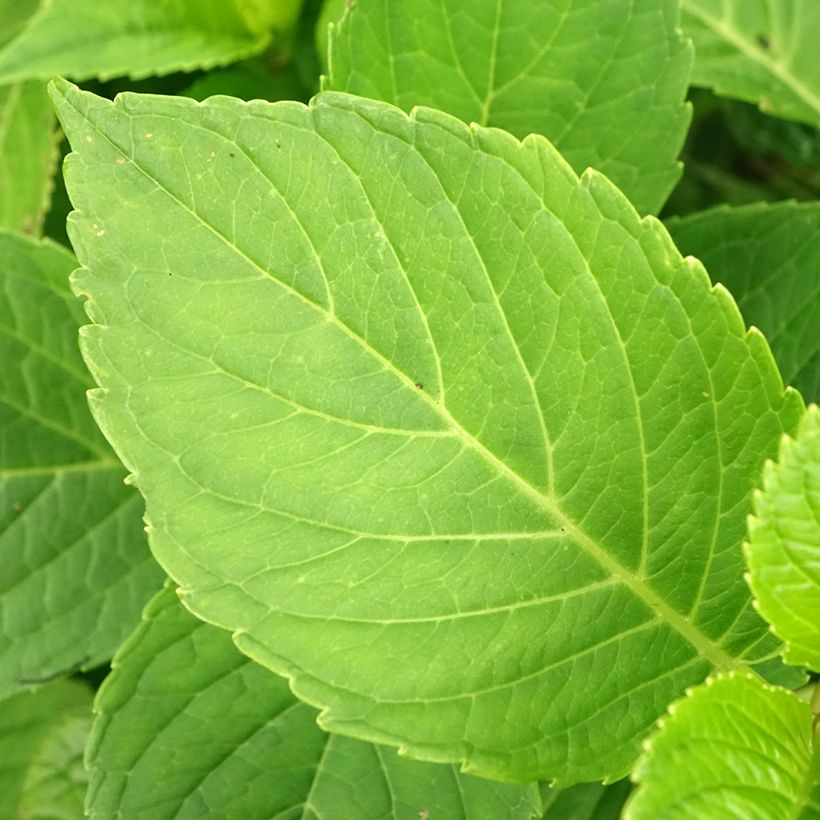

Plant habit
Flowering
Foliage
Botanical data
Hydrangea
macrophylla
Baron Rouge
Hydrangeaceae
Bigleaf Hydrangea, French Hydrangea, Mophead Hydrangea
Cultivar or hybrid
Other Hydrangea Macrophylla
View all →Planting and care
For optimal growth, it is recommended to plant the 'Red Baron' macrophylla hydrangea in spring or early autumn, ideally in a slightly shaded location such as against an east-facing or north-facing wall. Protecting the plant's base with a thick layer of mulch is advisable in areas with very cold weather. Make sure to keep it sheltered from cold and drying winds.
While it can grow in various soil types, the 'Red Baron' hydrangea prefers deep, moist, well-drained, and reasonably fertile soil. If the soil is poor, mix it with a substrate containing some compost and use a good base fertiliser before planting. If the soil is dry, plant the root ball at least 30-40 cm (11.8-15.7 in) away from the base of the wall and add well-decomposed compost to retain moisture in the soil better.
After planting, be aware of slugs that may be attracted to the young leaves. This hydrangea is very hardy and can be planted even in cold regions. Water regularly during hot periods to prevent the foliage from wilting during dry spells.
The 'Red Baron' hydrangea is small enough to be grown in a pot. Choose a suitable potting soil, regularly adding some compost and water during the summer.
Planting period
Intended location
Care
Planting & care advice
Haven't found what you were looking for?
Hardiness is the lowest winter temperature a plant can endure without suffering serious damage or even dying. However, hardiness is affected by location (a sheltered area, such as a patio), protection (winter cover) and soil type (hardiness is improved by well-drained soil).

Photo Sharing Terms & Conditions
In order to encourage gardeners to interact and share their experiences, Promesse de fleurs offers various media enabling content to be uploaded onto its Site - in particular via the ‘Photo sharing’ module.
The User agrees to refrain from:
- Posting any content that is illegal, prejudicial, insulting, racist, inciteful to hatred, revisionist, contrary to public decency, that infringes on privacy or on the privacy rights of third parties, in particular the publicity rights of persons and goods, intellectual property rights, or the right to privacy.
- Submitting content on behalf of a third party;
- Impersonate the identity of a third party and/or publish any personal information about a third party;
In general, the User undertakes to refrain from any unethical behaviour.
All Content (in particular text, comments, files, images, photos, videos, creative works, etc.), which may be subject to property or intellectual property rights, image or other private rights, shall remain the property of the User, subject to the limited rights granted by the terms of the licence granted by Promesse de fleurs as stated below. Users are at liberty to publish or not to publish such Content on the Site, notably via the ‘Photo Sharing’ facility, and accept that this Content shall be made public and freely accessible, notably on the Internet.
Users further acknowledge, undertake to have ,and guarantee that they hold all necessary rights and permissions to publish such material on the Site, in particular with regard to the legislation in force pertaining to any privacy, property, intellectual property, image, or contractual rights, or rights of any other nature. By publishing such Content on the Site, Users acknowledge accepting full liability as publishers of the Content within the meaning of the law, and grant Promesse de fleurs, free of charge, an inclusive, worldwide licence for the said Content for the entire duration of its publication, including all reproduction, representation, up/downloading, displaying, performing, transmission, and storage rights.
Users also grant permission for their name to be linked to the Content and accept that this link may not always be made available.
By engaging in posting material, Users consent to their Content becoming automatically accessible on the Internet, in particular on other sites and/or blogs and/or web pages of the Promesse de fleurs site, including in particular social pages and the Promesse de fleurs catalogue.
Users may secure the removal of entrusted content free of charge by issuing a simple request via our contact form.

































